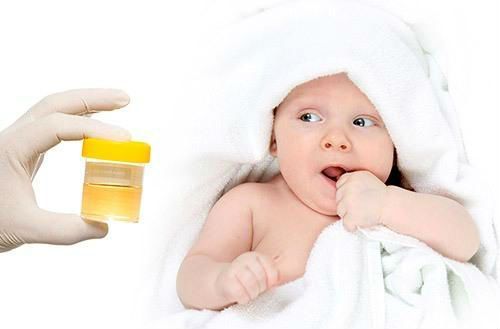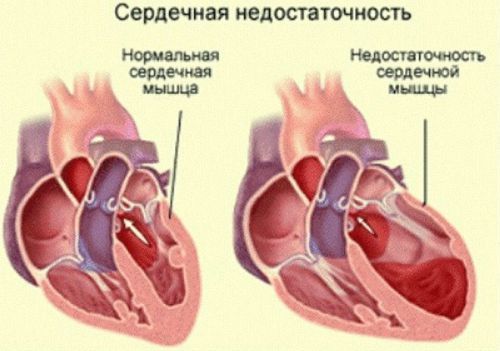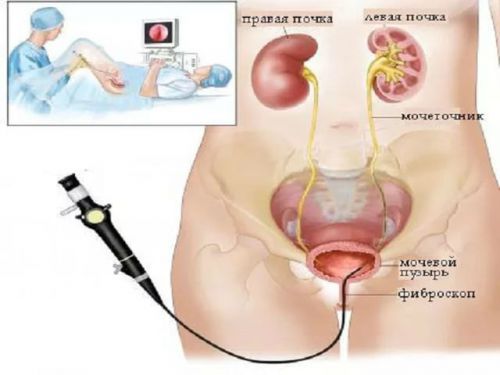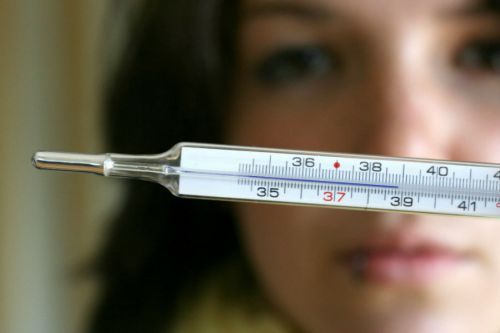The term “oliguria” in medicine indicate a small release of urine. It is not necessarily accompanied by or observed in the pathology. Adapting to internal and external conditions, the body is forced to change the production of urine and reduce fluid loss.
However, to find out what this symptom means, adequate reaction or impaired renal function is very important especially in pediatric patients.
Among the factors that may cause oliguria, nephritis with lesion of ability to filtering acute and chronic renal infection, negative effects of drugs, the response of adrenal glands to stress stimulus, the disturbed water balance in the body, electrolyte shifts.
What amount of urine is considered normal and what it depends on?
During the day, healthy kidneys of an adult produce about 1.5 l of urine. Usually this amount is ¾ of the entire drunk liquid. In addition, the ¼ part of released through the skin through sweat, breathing, part of feces.
For men, the overall volume is slightly higher (up to 2 years) than in women (1.6 l), subject to ingestion of one to two liters of fluid. The minimum is 500 ml of urine by drinking 800 ml of liquid.

A newborn baby with proper nutrition the amount of urine monthly increases from 200 to 600 ml to 800 ml on-year. The first 3 days after birth a small amount of urine is called transient oliguria. This is normal, due to a gradual adaptation of the kidneys to work independently.
In 5 years the child already produces up to 900 ml, by 10 years – 1200 ml
Older are equal to adults.
The mechanism of formation of urine involves 2 processes:
- filtration in kidney glomeruli;
- the reverse absorption (reabsorption) tubules.
They maintain proper fluid balance for the human body.
Dehydration (loss of fluid) method is called:
- increase sweating in the heat and fever;
- copious vomiting;
- diarrhea;
- blood loss;
- massive burn area on the skin;
- the accumulation of fluid in the cavities (pleural, peritoneal).
This filtering is reduced, and the maximum amount of fluid retained in the body. Such a mechanism of oliguria accompanied by increased concentration of solutes in the urine, high specific gravity.
In the case of fluid overload (flood) caused by heavy drinking, intravenous fluids to a patient in the hospital for diuresis in the healthy kidney should increase, and specific gravity of urine be greatly reduced.
The occurrence of oliguria without loss or flow of the liquid serves as a signal of pathological conditions, impaired filtration or reabsorption.
Why there is oliguria?
The most common causes of oliguria are hiding in:
- the kidney damage;
- General disorders of blood circulation;
- damage structures in the urinary tract;
- disrupted the nervous and hormonal regulation.

Conventionally, they are divided into:
- renal (renal) – related pathological changes and diseases of the kidneys, is typical for acute glomerulonephritis, nephrotic syndrome, chronic nephritis, polycystic disease, nephrosclerosis;
- extrarenal – are caused by other disorders (circulatory system, significant dehydration, liver, neuro-endocrine diseases);
- postrenal – occur because of obstructed outflow, triggered by an enlarged prostate, a stone in the pelvis or the ureter, a tumor of the accumulated blood (hematoma).
At high temperature the doctor recommends to drink more, it reduces dehydration and intoxication
Oliguria is an important sign of acute and chronic renal failure. Consider the most common causes.
Common infectious diseasesthat occur at high intoxication, fever, accompanied by loss of fluid from profuse sweat, vomiting, diarrhea. To diarrhea highly sensitive children. Therefore, the body kids any threatening enterocolitis dehydration.
Most tellingly infectious disease – cholera. The patient loses fluid persistent diarrhea, frequent vomiting. If treatment is not to compensate for water and electrolyte composition of oliguria after a few hours followed by complete anuria with renal unit.
When acute glomerulonephritis inflammation for the small capillaries in the renal glomeruli. Autoimmune education block filtration primary urine, and swelling of medulla compresses the canaliculi. Therefore, both violated the basic mechanism that ensures the balance of water.
Acute pyelonephritis is caused by infection of the pelvis and cups. In the case of severe it spreads to the tubules and glomeruli, causing inflammation, swelling.
Compression of renal parenchyma could trigger a significant stagnation of urine in the pelvis. Process caused by mechanical obstruction in the outflow pathways (stone, tumor, congenital narrowing of the ureters).

The affected kidney is increased in size to hydronephrosis. Urination some time kompensiruet an ideal healthy body. But in the absence of surgical intervention occurs first, oliguria, then anuria.
Heart failure in decompensated diseases of the myocardium (acute myocardial malformations, myocardiodystrophy, cardiomyopathy, hypertension, and others) contributes to the reduction of renal filtration, because it reduces the cardiac output, the amount of blood passing through the kidney membrane.
Heart failure is one of the causes of oliguria
Thromboembolism of the renal artery or compression of a similar vein greatly disturbed local blood flow, causing ischemia of the kidney tissue until necrosis of individual institutions. Oliguria is a required component of the disease.
In the practice of doctors oliguria observed after surgical treatment, massive blood loss, administration of high doses of diuretics, as a reaction to the drug Methotrexate.
What forms of quantitative disorders of urinary output are observed in the pathology?
In addition to oliguria, symptoms of diseases of the urinary system to distinguish:
- anuria – daily diuresis is reduced to 50 ml and less, the urine from the kidney to the bladder is not received, even if the introduction of a catheter reveals no residual urine (in contrast to acute delays are difficult to exit);
- polyuria – urine stands out much more than you drink fluids (2 l per day), the symptom indicates kidney disease, hormonal disorders.
Pathological conditions are often accompanied by alternating symptoms of polyuria, oliguria and anuria. They can indicate the stage of renal mechanisms.
Prerenal anuria may be observed:
- in a severe state of shock;
- hypotension of cardiac origin;
- thrombosis of the renal artery;
- acute massive blood loss.
Renal anuria – often is a dangerous symptom of poisoning (ethylene glycol, salts of heavy metals, low-quality alcohol, acetic acid).

Other causes can be:
- the tubular necrosis in renal ischemia;
- violation of canalicular patency of the salts of uric acid, and medicines sulfa group;
- acute and chronic nephritis.
Postrenal type is always associated with the impeded outflow of the urinary ways, their overlap, compression.
For polyuria is characterized not only by an increased discharge of urine, but its heavily diluted composition with low specific gravity. Often accompanied by an abnormal sense of thirst and the consumption of copious drinking (polydipsia). If polyuria is disturbed regulation of the reverse suction of water in the tubules (reabsorption).
The symptom may have a renal origin, with the defeat of the tubular apparatus (tubulopathy), is the initial stage of chronic renal failure caused by kidney disease. Also observed during recovery in the acute form of kidney failure.
Extrarenal causes of polyuria serve the neuroendocrine regulation disorders of water and electrolyte balance. May develop the syndrome Itsenko-Kushinga, diabetes, hyperthyroidism, acromegaly.
As a compensatory reaction polyuria accompanies:
- the consequences of hypertension;
- attacks of paroxysmal tachycardia;
- therapy of heart failure in the derivation of fluid from edematous tissues.
What is oliguria?
Oliguria is not a disease, and one of the signs of violation of the urinary tract. List the “symptoms oliguria” – wrong option, she is a symptom. We can only indicate the relationship with other signs helps to establish the disease.
Oliguria – a condition to determine the cause which will help physician-nephrologist
The clinical picture in different reasons accompanied by sustained symptoms used in cases of differential diagnosis.
When infections that cause common dehydration, patients appear:
- diarrhea;
- frequent vomiting;
- sweating;
- high temperature;
- dry skin and mucous membranes;
- sunken eyes;
- dizziness;
- weakness;
- weakness of the muscles;
- Tahi – or bradycardia, arrhythmia;
- lowering blood pressure;
- cramps;
- confused.
When postrenal oliguria with mechanical compression of the urinary structures are observed:
- intense pain in the abdomen, above the pubic area radiating to groin and vulva;
- nausea and vomiting;
- flatulence (distended abdomen);
- the tension of the abdominal muscles;
- fever with chills;
- painful beating in the back.

In the case of acute glomerulonephritis oliguria accompanied by:
- headaches;
- high blood pressure;
- back pain, in the abdomen;
- extreme weakness;
- mild fever;
- loss of appetite, nausea;
- shortness of breath and signs of pulmonary congestion.
One of the frequent complaints with an increase in insufficiency of the myocardium is cardiac arrhythmia
Heart failure occurs:
- swelling in the feet and legs;
- pronounced tachycardia when moving;
- shortness of breath;
- persistent cough;
- complaints of fatigue, pain in the heart region;
- cyanotic lips and fingertips;
- a jugular vein;
- the increase in the abdomen (ascites);
- a venous ring around the navel.
Thromboembolism of renal artery causes an infarction of the kidney with subsequent necrosis, accompanied by:
- sharp pain in the lower back, in contrast to renal colic, they are not radiating in the groin, perineum, not accompanied dysuric symptoms;
- a drop in blood pressure;
- vomiting;
- bloating;
- a delay of a chair.
As you can see, oliguria is a sign that requires urgent intervention and clarification of circumstances of occurrence. Prolonged reduction of urinary output can lead to irreversible changes in the parenchyma of the kidney.
Diagnosis
To determine the urine output for the day as every adult by comparison of fluid and the volume of urine collected in a container. Suspect symptom can on rare urination against the background of thirst and drinking large quantities of water.
The above symptoms should call attention to clarify the specific reasons.

Verified by analysis of urine, blood tests on the content of nitrogenous substances, electrolytes. In kidney indicates the presence of protein, erythrocytes in urine sediment, cells of renal epithelium. Analysis of urine by zimnitskiy allows you to identify the impaired ability of the kidney to the concentration of emitted substances. Sample Nechiporenko – confirms connection with inflammation, the role of bacteriuria.
Cystoscopy inspection of the bladder and urethra helps to identify cystitis, a tumor blocking one of the ureters
Excretory urography gives information about the excretory function of both kidneys, the destruction of the Cup-structures of the renal pelvis, increasing the kidney, the tumor growth. Computed tomography is used in the differential diagnosis of unclear lesions.
How to treat oliguria?
Treatment requires oliguria, and the reason that caused it.
After the examination, the physician includes in the scheme of therapy:
- urgent hemodialysis, hemosorption to eliminate the filtration unit and signs of kidney failure;
- attempt removing detained urine by catheterization of the bladder and ureter;
- heart funds to support the forces of the myocardium, the restoration of normal contractions.
In the course of therapy depending on the reasons for apply:
- diuretics to swelling;
- antibiotics – for the purpose of anti-inflammatory treatment;
- special antidotes in case of poisoning;
- solutions Gemodeza, Reopoliglyukina – to combat shock and toxicity;
- anticoagulants – with symptoms of renal artery thrombosis;
- a means for correcting the blood pressure;
- cytostatics glomerulonephritis.
For removing mechanical delays urine flow may need to operate on a patient for emergency indications. Produce stone removal, of the tumor.
Is it possible to use the advice of traditional medicine?
The initial phenomena or suspected insufficient urination without communication with other symptoms can be given a few days to make decoctions of plants recommended by folk healers. They boost the flow of urine, relieve toxicity.
Will fit:
- juniper berries;
- psyllium husk;
- the leaves and roots of anemarrhena;
- the gentian root.
Popular recipe is a mixture of cilantro with a solution of buttermilk.
If reducing the amount of produced urine is not changed and is sustainable, it is necessary to consult a doctor and conduct all recommended tests. This will help to identify renal pathology at an early stage.



